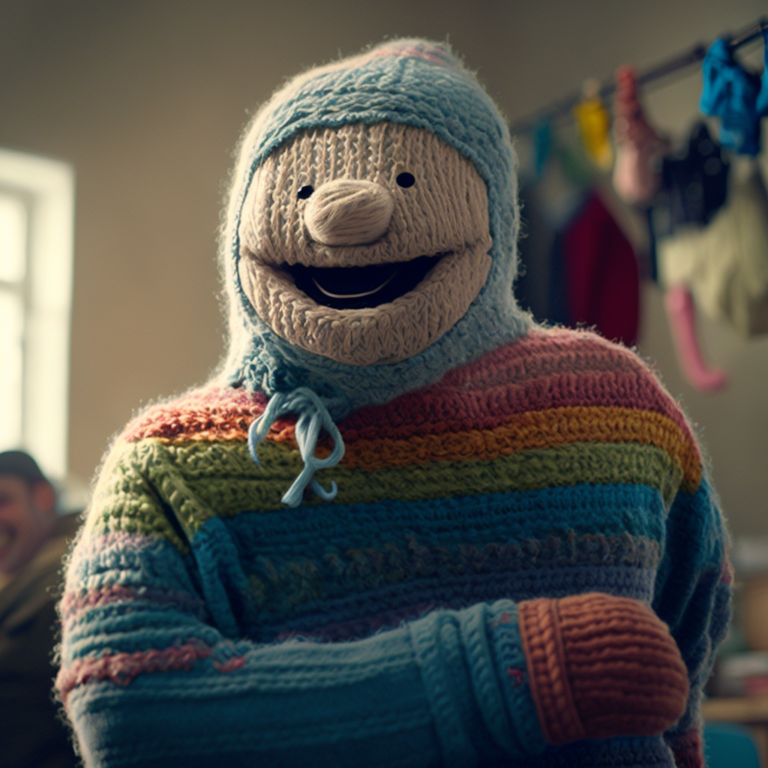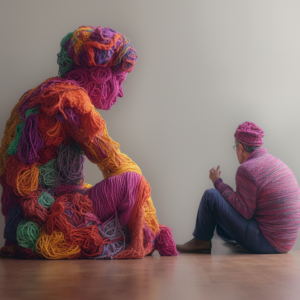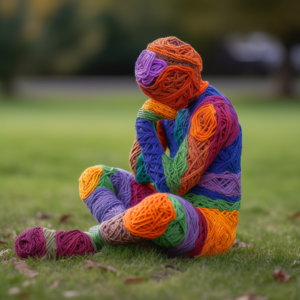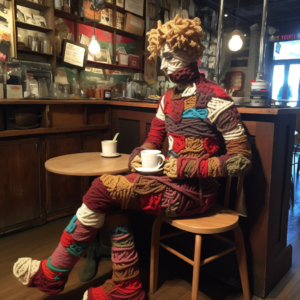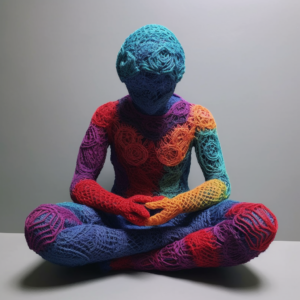Autistic individuals often have sensory sensitivities that can make wearing certain types of clothing uncomfortable or overwhelming. However, with some adjustments, clothing can be made more comfortable and accessible for individuals with autism. Here are some ideas for autistic clothing adjustment.
DIY Autism Clothing Adjustments for Autistic Sensory Needs
As a parent or caregiver of a child with autism, you may have noticed that clothing can be a source of discomfort and distress for them. Sensory issues can make it difficult for them to tolerate certain fabrics, tags, seams, and even the way clothes fit. Fortunately, there are some simple DIY autism clothing adjustments that can help make dressing a more comfortable and enjoyable experience for your child. One of the most common issues for autistic children is the feeling of tightness or constriction around the waist. This can be addressed by using elastic waistbands or drawstring closures instead of buttons or zippers. You can also try using pants with a higher rise or a looser fit to avoid any pressure on the stomach area. For girls, leggings or tights can be a great alternative to jeans or skirts, as they provide a snug fit without any discomfort. Another common issue is the feeling of seams or tags rubbing against the skin. You can easily remove tags from clothing using a pair of scissors or a seam ripper. For seams, you can try turning the clothing inside out and using a soft fabric tape to cover any rough edges. You can also try using seamless clothing, such as seamless socks or underwear, which can be found at many specialty stores. For children who are sensitive to certain fabrics, it’s important to choose clothing made from soft, breathable materials such as cotton or bamboo. Avoid synthetic fabrics like polyester or nylon, which can be scratchy and uncomfortable. You can also try washing new clothes several times before wearing them to help soften the fabric and remove any chemical residues. If your child is sensitive to the feeling of sleeves or pant legs bunching up, you can try using clothing with thumb holes or footies. These can help keep sleeves and pant legs in place, providing a more comfortable and secure fit. You can also try using clothing with adjustable cuffs or hems, which can be tightened or loosened as needed. Finally, it’s important to consider the overall fit of the clothing. Many autistic children prefer looser, more comfortable clothing that allows for freedom of movement. You can try using clothing with a relaxed fit or sizing up to provide more room. You can also try layering clothing, which can provide a sense of security and comfort. Overall, a simple DIY autism clothing adjustments that can help make dressing a more comfortable and enjoyable experience for autistic children. By choosing soft, breathable fabrics, removing tags and rough seams, and using adjustable closures and layering, you can help your child feel more comfortable and confident in their clothing. Remember to be patient and understanding, and to involve your child in the process as much as possible. With a little creativity and effort, you can help your child feel more comfortable and confident in their clothing.Tips for Choosing Clothing for Autistic Individuals
Autism is a neurological disorder that affects communication, social interaction, and behavior. It is a spectrum disorder, which means that it affects individuals differently. One of the challenges that autistic individuals face is clothing adjustment. Clothing can be uncomfortable, itchy, or too tight, which can cause sensory overload and distress. However, there are ways to make clothing more comfortable and suitable for autistic individuals.Choose clothing that is comfortable and soft
Autistic individuals may have sensory issues, which means that they are sensitive to certain textures, fabrics, and tags. Clothing made from natural fibers such as cotton, bamboo, or silk can be more comfortable and breathable than synthetic fabrics. It is also important to choose clothing that is loose-fitting and not too tight. Tight clothing can be restrictive and uncomfortable, which can cause anxiety and stress.Consider the design and style of clothing
Autistic individuals may have preferences for certain colors, patterns, or designs. Some may prefer plain and simple clothing, while others may prefer bold and bright colors. Respecting their preferences and allowing them to express themselves through their clothing is important. Clothing with buttons, zippers, or snaps can be difficult for some autistic individuals to manage. Clothing with elastic waistbands or Velcro closures can be easier to put on and take off.Consider the weather and environment
Autistic individuals may have difficulty regulating their body temperature, meaning they may feel too hot or cold. Clothing that is too warm or too cold can cause discomfort and distress. It is important to choose clothing that is appropriate for the weather and environment. Layers of clothing can be helpful, as they can be added or removed as needed.Involve the autistic individual in the clothing selection process
Autistic individuals may have strong preferences and opinions about their clothing. It is important to listen to their feedback and involve them in decision-making. This can help them feel more comfortable and confident in their clothing.Be patient and understanding
Autistic individuals may have difficulty with transitions and changes. It may take time for them to adjust to new clothing or styles. It is important to be patient and understanding and to provide support and encouragement. Positive reinforcement can be helpful, such as praising them for trying on new clothing or wearing a new outfit. In conclusion, choosing clothing for autistic individuals can be a challenge, but there are ways to make it more comfortable and suitable. It is important to choose comfortable and soft clothing, consider the design and style, consider the weather and environment, involve the autistic individual in the selection process, and be patient and understanding. By following these tips, autistic individuals can feel more comfortable and confident in their clothing, which can help them to navigate their daily lives better.Adaptive Clothing for Autistic Children and Adults
Autism is a developmental disorder that affects communication, social interaction, and behavior. It is a lifelong condition that requires special attention and care. Autism clothing adjustments are one of the biggest challenges that autistic individuals face. Clothing can be uncomfortable, itchy, or too tight, which can cause sensory overload and distress. However, there are ways to make clothing more comfortable and adaptive for autistic children and adults.Consider the fabric
Autistic individuals are often sensitive to certain textures and materials. Therefore, it is important to choose soft, breathable, and non-irritating fabrics such as cotton, bamboo, or modal. These fabrics are gentle on the skin and do not cause itching or irritation. Additionally, avoid clothing with tags, seams, or buttons that can cause discomfort or irritation. Instead, opt for tagless clothing or remove tags and seams with scissors.Consider the fit
Autistic individuals may have sensory issues with tight or loose clothing. Therefore, it is important to find the right fit that is not too tight or too loose. Clothing that is too tight can cause discomfort and restrict movement, while clothing that is too loose can be distracting and cause sensory overload. Additionally, consider the length of sleeves, pants, and shirts. Some autistic individuals prefer shorter sleeves or pants to avoid sensory overload.Consider the style
Autistic individuals may have preferences for certain colors, patterns, or designs. Therefore, it is important to involve them in the clothing selection process. Let them choose the colors and patterns that they like and feel comfortable in. Additionally, consider the style of clothing. Some autistic individuals prefer loose-fitting clothing, while others prefer more structured clothing. It is important to find the style that suits their preferences and needs.Consider the sensory input
Autistic individuals may benefit from sensory input through clothing. For example, weighted vests or compression shirts can provide deep pressure input that can calm and regulate the nervous system. Additionally, fidget jewelry or chewable necklaces can provide sensory input that can reduce anxiety and stress. It is important to consult with an occupational therapist or sensory integration specialist to determine the appropriate sensory input for each individual.Consider the practicality
Autistic individuals may have difficulties with dressing and undressing. Therefore, it is important to choose clothing that is easy to put on and take off. Clothing with zippers, snaps, or Velcro can be easier to manage than clothing with buttons or laces. Additionally, consider the durability of clothing. Autistic individuals may engage in repetitive behaviors or have difficulties with fine motor skills, which can cause wear and tear on clothing. Therefore, it is important to choose clothing that is durable and can withstand frequent washing and wearing. In conclusion, autism clothing adjustments can be a challenge for autistic individuals, but there are ways to make clothing more comfortable and adaptive. Consider the fabric, fit, style, sensory input, and practicality when choosing clothing for autistic children and adults. Additionally, involve them in the clothing selection process and consult with an occupational therapist or sensory integration specialist to determine the appropriate sensory input. With these ideas in mind, autistic individuals can feel more comfortable and confident in their clothing.How to Modify Clothing for Sensory Needs
Autism is a neurological disorder that affects the way a person perceives and processes sensory information. This can make clothing a source of discomfort and distress for individuals with autism. However, with a few simple modifications, clothing can be made more comfortable and accommodating for those with sensory needs. Seams and tags can also be a source of discomfort for individuals with autism. Consider removing tags or purchasing tagless clothing. Additionally, look for clothing with flat seams or consider using a seam ripper to remove bulky seams. This can help reduce irritation and discomfort caused by clothing. Buttons and zippers can also be challenging for individuals with autism. Consider replacing buttons with Velcro or snaps, which are easier to manipulate and can reduce frustration. Additionally, consider using elastic waistbands or drawstrings instead of zippers, which can be difficult to manage. Color and pattern can also be important considerations for individuals with autism. Some individuals may be sensitive to bright colors or bold patterns, which can be overwhelming. Consider opting for clothing in muted colors or with subtle patterns. This can help reduce sensory overload and promote a sense of calm. Consider the overall design of clothing. Some individuals with autism may prefer clothing with fewer details or embellishments, as these can be distracting and overwhelming. Opt for simple designs and avoid clothing with excessive pockets, buttons, or zippers. In conclusion, modifying clothing for sensory needs can greatly improve the comfort and well-being of individuals with autism. By using softer fabrics, loose-fitting clothing, tagless clothing, flat seams, Velcro or snaps, muted colors, and simple designs, clothing can be made more accommodating and comfortable for those with sensory needs. With a little creativity and attention to detail, clothing can become a source of comfort and ease for individuals with autism.Autism Clothing Adjustments: Conclusion
Ideas for autism clothing adjustments include using soft and comfortable fabrics, avoiding scratchy tags and seams, incorporating sensory-friendly features such as weighted vests or compression shirts, and providing options for adjustable waistbands and closures. These adjustments can help individuals with autism feel more comfortable and confident in their clothing, allowing them to better participate in daily activities and social interactions.Similar Articles
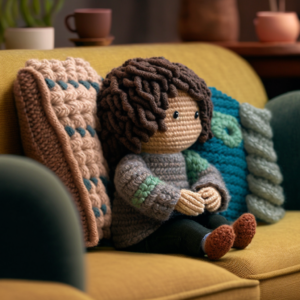
Creating an Autism Friendly Home Environment
April 25, 2023
5 Comments
Table of Contents Introduction Benefits of an Autism Friendly Home Environment for Late-Diagnosed Autistic Adults Importance of Communication and Collaboration in Creating an Autism Friendly

Mindfulness and Autism: Exploring the Benefits of Meditation for Late-Diagnosed Autistic Adults
May 15, 2023
2 Comments
Table of Contents Mindfulness and Autism: Introduction Understanding the Connection Between Mindfulness and Autism Mindfulness-Based Interventions for Autism: Current Research and Future Directions The Benefits

Autism Independent Living: Strategies for Helping Late-Diagnosed Autistic Adults Live on Their Own
May 4, 2023
1 Comment
Table of Contents Autism Independent Living: Introduction Navigating Social Situations and Building Relationships as an Autistic Adult Creating a Support Network for Autism Independent Living

